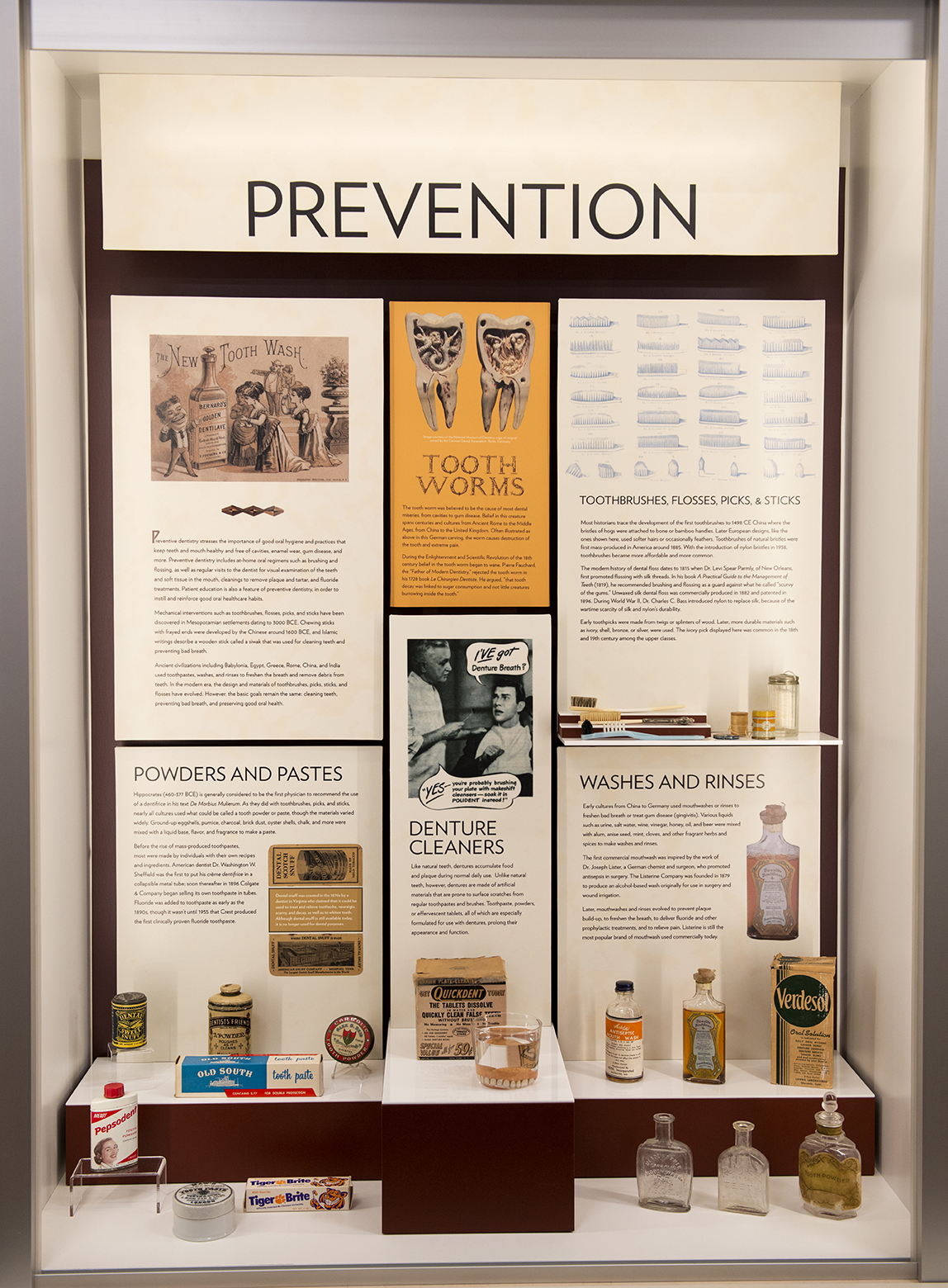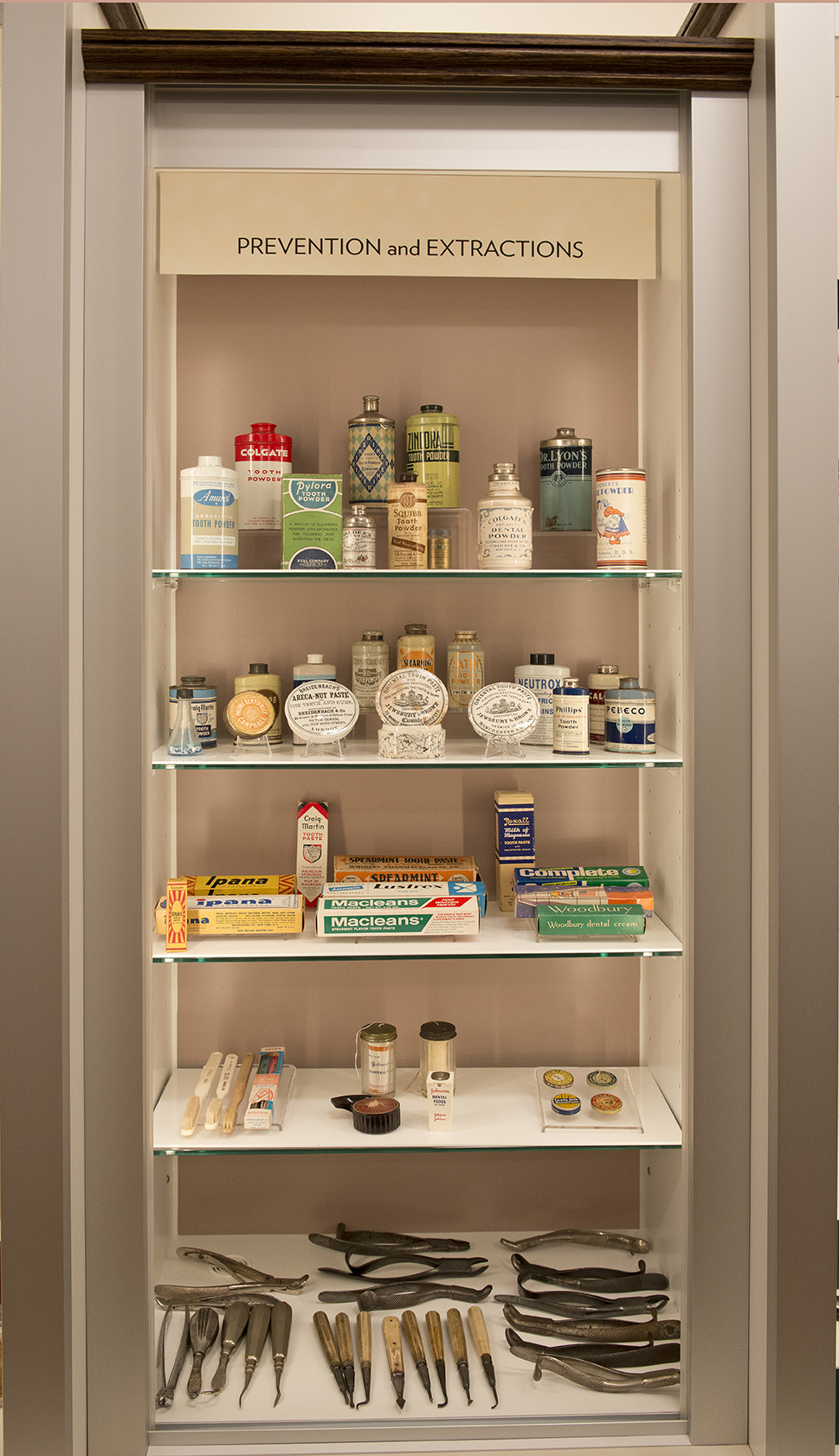

Sponsored by: Dr. Rocky L. Napier
“An ounce of prevention is worth a pound of cure”
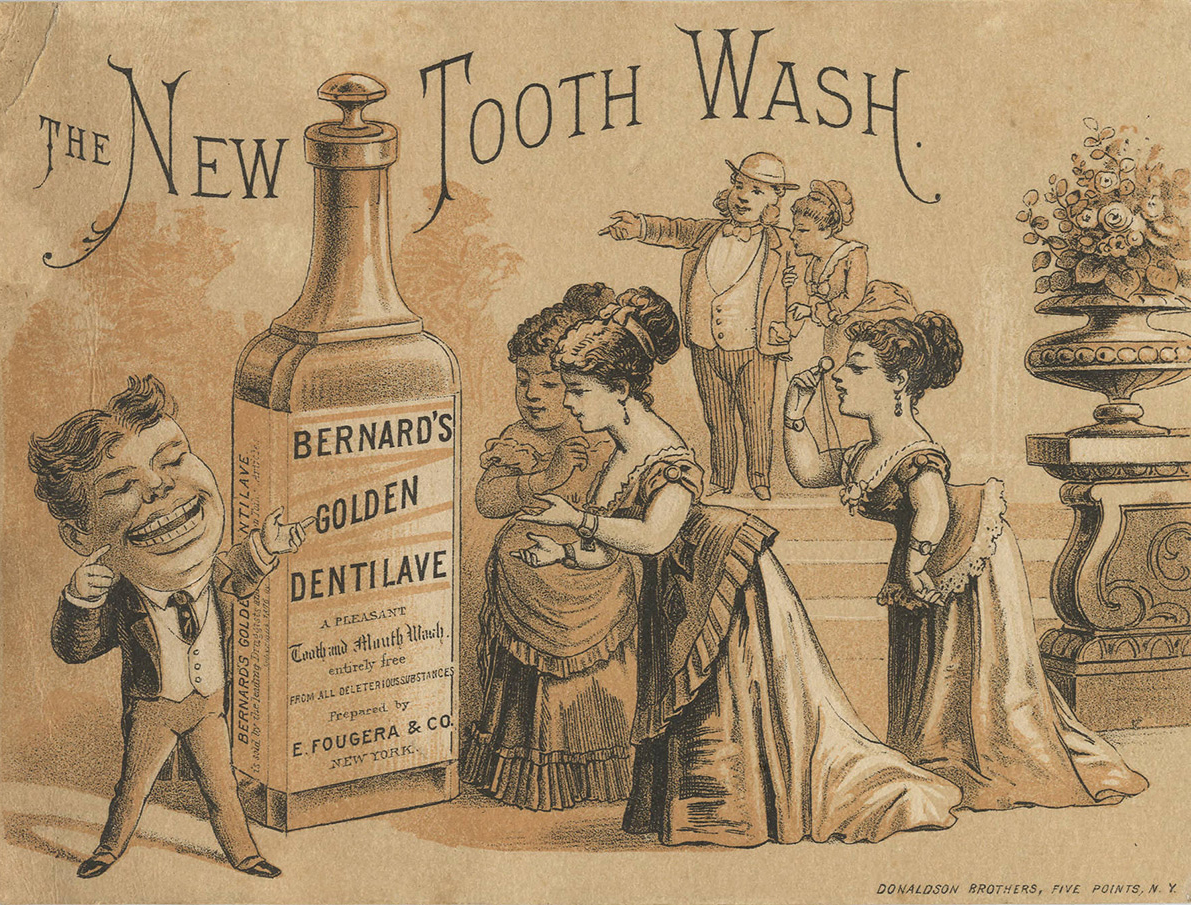 Preventive dentistry, as the name implies, stresses importance of good oral hygiene and practices that keep your teeth and mouth healthy and free of cavities, enamel wear, gum disease, and more. Preventive dentistry includes at-home oral regimens such as brushing and flossing, as well as regular visits to the dentist for visual examination of the teeth and soft tissue in the mouth, cleanings to remove plaque and tartar, and fluoride treatments. Patient education is also a feature of preventive dentistry, in order to instill and reinforce good oral healthcare habits.
Preventive dentistry, as the name implies, stresses importance of good oral hygiene and practices that keep your teeth and mouth healthy and free of cavities, enamel wear, gum disease, and more. Preventive dentistry includes at-home oral regimens such as brushing and flossing, as well as regular visits to the dentist for visual examination of the teeth and soft tissue in the mouth, cleanings to remove plaque and tartar, and fluoride treatments. Patient education is also a feature of preventive dentistry, in order to instill and reinforce good oral healthcare habits.
Pioneers in the area of preventive dentistry include Dr. Thaddeus P. Hyatt, who encouraged dentists to help patients prevent decay and Dr. Alfred C. Fones, who founded the first school to train dental hygienists. Charleston native Dr. Rodriques Ottolengui was among those who taught at Fones Clinic for Dental Hygienists in Bridgeport, Connecticut.
Mechanical interventions such as toothbrushes, flosses, picks, and sticks have been discovered in Mesopotamia settlements dating to 3000BCE. Chewing sticks with frayed ends were developed by the Chinese around 1600 BCE and Islamic writings describe a wooden stick called a siwak to be used for cleaning teeth and preventing bad breath. Ancient civilizations including Babylonia, Egypt, Greece Rome, China, and India used toothpastes, washes, and rinses to freshen the breath and remove debris from teeth. In the modern era, the design and materials of toothbrushes, picks, sticks, and flosses have evolved, however, the basic goals remain the same: cleaning teeth, preventing bad breath, and preserving good oral health.
TOOTHBRUSHES, FLOSSES, PICKS, AND STICKS
 Most historians trace the development of the first toothbrushes to 1498 CE China where the bristles of hogs were attached to bone or bamboo handles. Later European designs, like the one shown here, used softer hairs or occasionally feathers. Toothbrushes were first mass-produced in America of natural bristles around 1885. With the introduction of nylon bristles in 1938, toothbrushes became more affordable and more common.
Most historians trace the development of the first toothbrushes to 1498 CE China where the bristles of hogs were attached to bone or bamboo handles. Later European designs, like the one shown here, used softer hairs or occasionally feathers. Toothbrushes were first mass-produced in America of natural bristles around 1885. With the introduction of nylon bristles in 1938, toothbrushes became more affordable and more common.
The modern history of dental floss dates to 1815 when Dr. Levi Spear Parmly, of New Orleans, Louisiana, first promoted flossing with silk threads. In his book A Practical Guide to the Management of Teeth (1819) he recommended brushing and flossing as a guard against what he called “scurvy of the gums.” Unwaxed silk dental floss was commercially produced in 1882 and patented in 1896. During World War II, Dr. Charles C. Bass introduced nylon to replace silk, because of the wartime scarcity of silk and nylon’s durability.
Early toothpicks were made from twigs or splinters of wood. Later, more durable materials such as ivory or shell, bronze or silver were used. The ivory picks displayed here were common in the 18th and 19th century among the upper classes. Today, the majority of toothpicks are made of wood and intended for single use.
TOOTH WORM
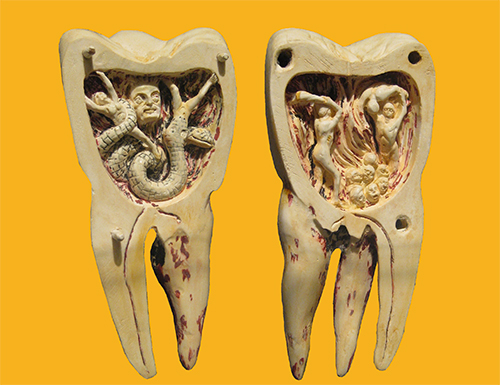 The tooth worm was believed to be the cause of most dental miseries from cavities to gum disease. Belief in this creature spans centuries and cultures from Ancient Rome to the Middle Ages, from China to the United Kingdom. Often illustrated as here in this German carving, the worm causes destruction of the tooth and extreme pain. During the Enlightenment and Scientific Revolution of the 18th century belief in the tooth worm began to wane. Pierre Fauchard, the “Father of Modern Dentistry,” rejected the tooth worm in his 1728 book Le Chirugien Dentiste. He argued, “that tooth decay was linked to sugar consumption and not little creatures burrowing inside the tooth.” Image courtesy of the National Museum of Dentistry, copy of original owned by the German Dental Association, Berlin, Germany.
The tooth worm was believed to be the cause of most dental miseries from cavities to gum disease. Belief in this creature spans centuries and cultures from Ancient Rome to the Middle Ages, from China to the United Kingdom. Often illustrated as here in this German carving, the worm causes destruction of the tooth and extreme pain. During the Enlightenment and Scientific Revolution of the 18th century belief in the tooth worm began to wane. Pierre Fauchard, the “Father of Modern Dentistry,” rejected the tooth worm in his 1728 book Le Chirugien Dentiste. He argued, “that tooth decay was linked to sugar consumption and not little creatures burrowing inside the tooth.” Image courtesy of the National Museum of Dentistry, copy of original owned by the German Dental Association, Berlin, Germany.
WASHES AND RINSES
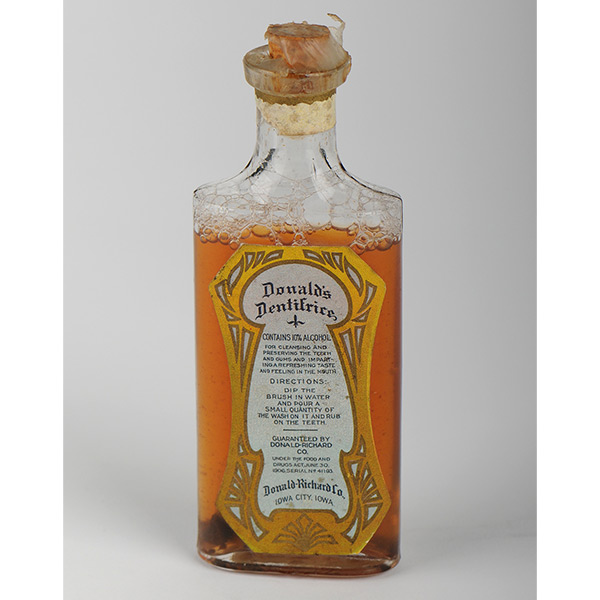 Early cultures from China to Greece to Germany used mouthwashes or rinses to freshen bad breath or treat gum disease (gingivitis). Various liquids such as urine, salt water, wine, vinegar, honey, oil, and beer were mixed with alum, anise seed, mint, cloves, and other fragrant herbs and spices to make washes and rinses. The first commercial mouthwash was inspired by the work of Dr. Joseph Lister, a German chemist and surgeon who promoted antisepsis in surgery. The Listerine Company was founded in 1879 to produce an alcohol-based wash originally for use in surgery and wound irrigation. Later, mouthwashes and rinses evolved to prevent plaque build-up, to freshen the breath, to deliver fluoride and other prophylactic treatments, and to relieve pain. Listerine is still the most popular brand of mouthwash used commercially today.
Early cultures from China to Greece to Germany used mouthwashes or rinses to freshen bad breath or treat gum disease (gingivitis). Various liquids such as urine, salt water, wine, vinegar, honey, oil, and beer were mixed with alum, anise seed, mint, cloves, and other fragrant herbs and spices to make washes and rinses. The first commercial mouthwash was inspired by the work of Dr. Joseph Lister, a German chemist and surgeon who promoted antisepsis in surgery. The Listerine Company was founded in 1879 to produce an alcohol-based wash originally for use in surgery and wound irrigation. Later, mouthwashes and rinses evolved to prevent plaque build-up, to freshen the breath, to deliver fluoride and other prophylactic treatments, and to relieve pain. Listerine is still the most popular brand of mouthwash used commercially today.
POWDERS AND PASTES
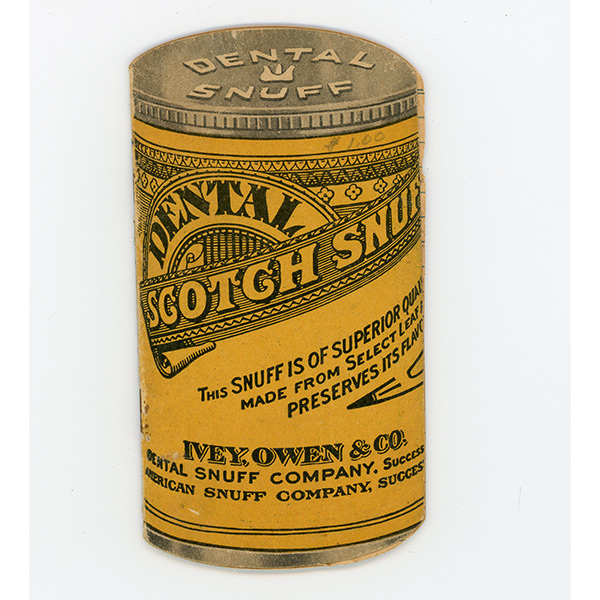 Hippocrates (460-377 BCE) is generally considered to be the first physician to recommend the use of dentifrice in his text De Morbius Mulierum. As with toothbrushes, picks, and sticks nearly all cultures used what could be called a tooth powder or paste, though the materials vary widely. Ground up eggshells, pumice, charcoal, brick dust, oyster shells, chalk, and more were mixed with a liquid base, flavor, and fragrance to make pastes. Before the rise of mass-produced toothpastes, most were made by individuals with their own recipes and ingredients. American dentist Dr. Washington W. Sheffield was the first to put his crème dentifrice in a collapsible metal tube; soon thereafter in 1896 Colgate & Company began selling its own toothpaste in tubes. Fluoride was added to toothpaste as early as the 1890s, though it wasn’t until 1955 that Crest produced the first clinically proven fluoride toothpaste.
Hippocrates (460-377 BCE) is generally considered to be the first physician to recommend the use of dentifrice in his text De Morbius Mulierum. As with toothbrushes, picks, and sticks nearly all cultures used what could be called a tooth powder or paste, though the materials vary widely. Ground up eggshells, pumice, charcoal, brick dust, oyster shells, chalk, and more were mixed with a liquid base, flavor, and fragrance to make pastes. Before the rise of mass-produced toothpastes, most were made by individuals with their own recipes and ingredients. American dentist Dr. Washington W. Sheffield was the first to put his crème dentifrice in a collapsible metal tube; soon thereafter in 1896 Colgate & Company began selling its own toothpaste in tubes. Fluoride was added to toothpaste as early as the 1890s, though it wasn’t until 1955 that Crest produced the first clinically proven fluoride toothpaste.
FUN FACTOID:
Dental snuff was created in the 1870s by a dentist in Virginia who claimed that it could be used treat and relieve toothache, neuralgia, scurvy, and decay, as well as to whiten teeth. Although dental snuff is still available today, it is no longer used for dental purposes.
DENTURE CLEANERS
“Banish plate-cleaning drudgery. Fine for removing tobacco stains.”Like natural teeth, dentures also accumulate food and plaque during normal daily use. Unlike natural teeth, however, dentures are made of artificial materials which are prone to surface scratches from regular toothpastes and brushes. Toothpaste, powders, or effervescent tablets, all of which are especially formulated for use with dentures prolong their appearance and function.
